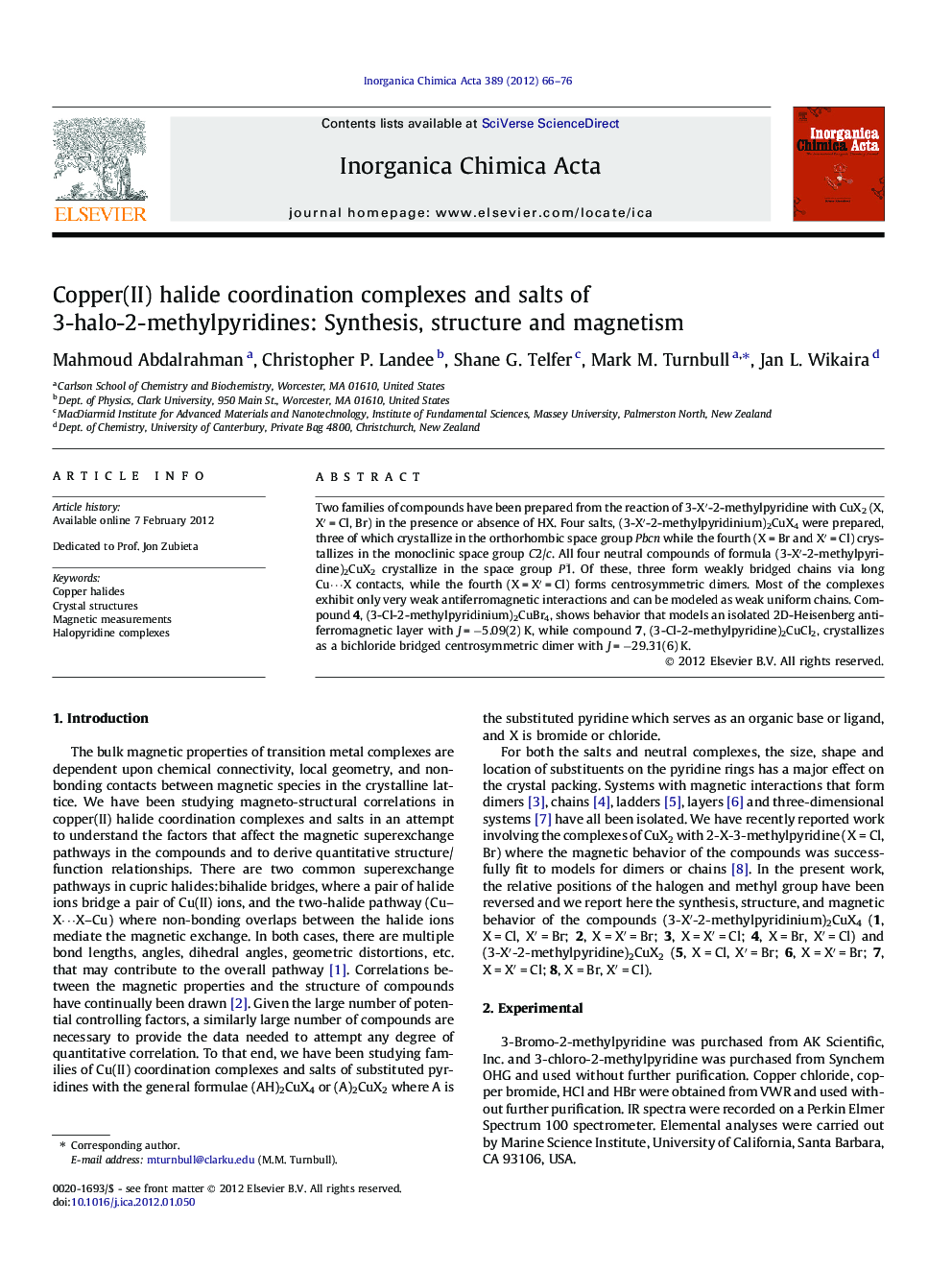| Article ID | Journal | Published Year | Pages | File Type |
|---|---|---|---|---|
| 1310792 | Inorganica Chimica Acta | 2012 | 11 Pages |
Two families of compounds have been prepared from the reaction of 3-X′-2-methylpyridine with CuX2 (X, X′ = Cl, Br) in the presence or absence of HX. Four salts, (3-X′-2-methylpyridinium)2CuX4 were prepared, three of which crystallize in the orthorhombic space group Pbcn while the fourth (X = Br and X′ = Cl) crystallizes in the monoclinic space group C2/c. All four neutral compounds of formula (3-X′-2-methylpyridine)2CuX2 crystallize in the space group P1¯. Of these, three form weakly bridged chains via long Cu⋯X contacts, while the fourth (X = X′ = Cl) forms centrosymmetric dimers. Most of the complexes exhibit only very weak antiferromagnetic interactions and can be modeled as weak uniform chains. Compound 4, (3-Cl-2-methylpyridinium)2CuBr4, shows behavior that models an isolated 2D-Heisenberg antiferromagnetic layer with J = −5.09(2) K, while compound 7, (3-Cl-2-methylpyridine)2CuCl2, crystallizes as a bichloride bridged centrosymmetric dimer with J = −29.31(6) K.
Graphical abstractTwo families of copper complexes, (3-X′-2-MepyH)2CuX4 and (3-X′-2-Mepy)2CuX2 have been synthesized and studied by single crystal X-ray diffraction and variable temperature magnetic susceptibility [3-X′-2-Mepy = 3-halo-2-methylpyridine, X′ = Cl, Br; X = Cl, Br].Figure optionsDownload full-size imageDownload as PowerPoint slideHighlights► Two families of Cu(II) halide compounds of (3-halo-2-methylpyridine and 3-X′-2-Mepy) are described. ► They have been characterized by IR, X-ray diffraction and magnetic susceptibility. ► Most of the compounds show weak antiferromagnetic interactions. ► (3-Cl-2-Mepy)2CuCl2 crystallizes as a dimer and exhibits moderate antiferromagnetic exchange. ► (3-Cl-2-MepyH)2CuBr2 behaves as a well isolated 2D-square Heisenberg.
